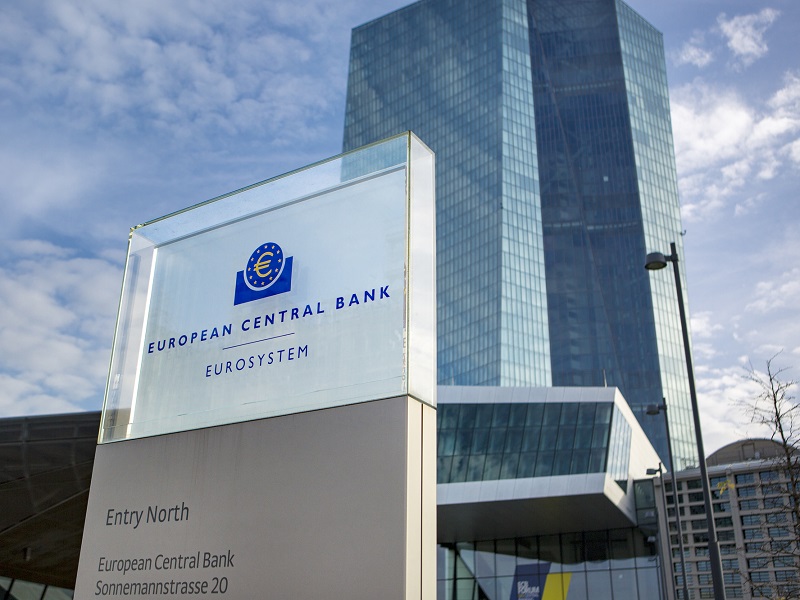
European Central Bank President Christine Lagarde pushed back Thursday against market expectations for quick interest rate cuts even as Europe’s economy sputters and financial markets froth in hopes of cheaper credit that would boost business activity and stock prices.
The bank left its benchmark rate unchanged at a record-high 4%, and Lagarde said afterward that “the consensus around the table … was that it was premature to discuss rate cuts.”
Financial markets have been expecting a cut as early as April, but Lagarde said bank officials would make decisions based on the latest figures about the economy’s health, rather than offering a longer-term timetable for rate moves. She did say she stood behind a comment she made last week about a “likely” cut this summer.
Inflation has declined markedly to 2.9% in December from a painful peak of 10.6% in October 2022 that made everything from groceries to energy more expensive. Lagarde acknowledged the drop — which is getting closer to the bank’s goal of 2% — and said inflation was expected to keep easing this year.
She cautioned, however, that disruption stemming from the Israel-Hamas war, including attacks on ships in the Red Sea by Yemen’s Houthi rebels, could disrupt that progress.
Risks for higher inflation “include the heightened geopolitical tensions, especially in the Middle East, which could push energy prices and freight costs higher in the near term and hamper global trade,” she said.
Though Europe’s economy has been shrinking and is particularly at risk from trade turmoil in the Red Sea, some analysts agreed that the time isn’t now to start making it easier for people to borrow money to buy houses or invest in businesses.
“The job of bringing inflation back to target is not done yet,” said Carsten Brzeski, global head of macro at ING bank who foresees a first cut only in June. “As long as actual inflation remains closer to 3% than 2%, the ECB will not look into possible rate cuts.”
But with inflation falling considerably in major economies like Europe and the United States, financial markets are soaring in hopes of cheaper credit that would boost business activity and stock prices.
Stock investors saw their holdings, such as those in U.S. retirement accounts, spike in the last weeks of 2023 as the U.S. Federal Reserve and ECB indicated that a rapid series of rate hikes was ending.
Fed Chair Jerome Powell said officials discussed prospects for rate cuts at the bank’s December meeting, and the U.S. central bank has indicated it would cut its key interest rate three times this year.
The S&P 500, a broad measure of U.S. large company shares, has hit record highs this week, and European indexes also have risen. The global stock rally faces questions about whether gains can continue.
Rate cuts make riskier investments like stocks relatively more attractive compared to safer bets like money market accounts and certificates of deposit. They also stimulate business activity and thus prospects for share prices to go higher.
Like the ECB, Norway’s central bank kept rates steady Thursday. The same day, the central bank in Turkey, a country that is suffering from out-of-control inflation of nearly 65%, raised its key rate to 45%, expected to be the last increase for some time.
While rate hikes are a central bank’s chief weapon to snuff out inflation, they also can slow the economy — which has been seen in Europe and countries around the world, feeding expectations for cuts now that inflation has dropped closer to preferred levels.
The economy of the 20 European Union member countries that share the euro currency, where the ECB sets interest rates, shrank slightly in the July-to-September quarter of last year. Expectations are no better for the following months.
The economic squeeze follows a surge of inflation fueled by a supply chain crunch during the Covid-19 pandemic and then higher food and energy prices tied to Russia’s war in Ukraine. The worst of the energy costs and supply problems have eased, but inflation has spread through the economy as workers push for higher wages to keep up with the boost in prices they’re paying.
Analysts say there are good reasons for the ECB to move cautiously. For one, having to reverse course and raise rates if inflation doesn’t keep falling — or spikes again — would only prolong the pain from tighter credit.
Another is the speed of pay raises for Europe’s workers. ECB officials have indicated that they want to see figures for wage increases for the first months of this year before deciding where they think inflation is headed.
“We need to be further along in the disinflation process before we can be sufficiently confident that inflation will actually hit the target in a timely manner,” Lagarde said.